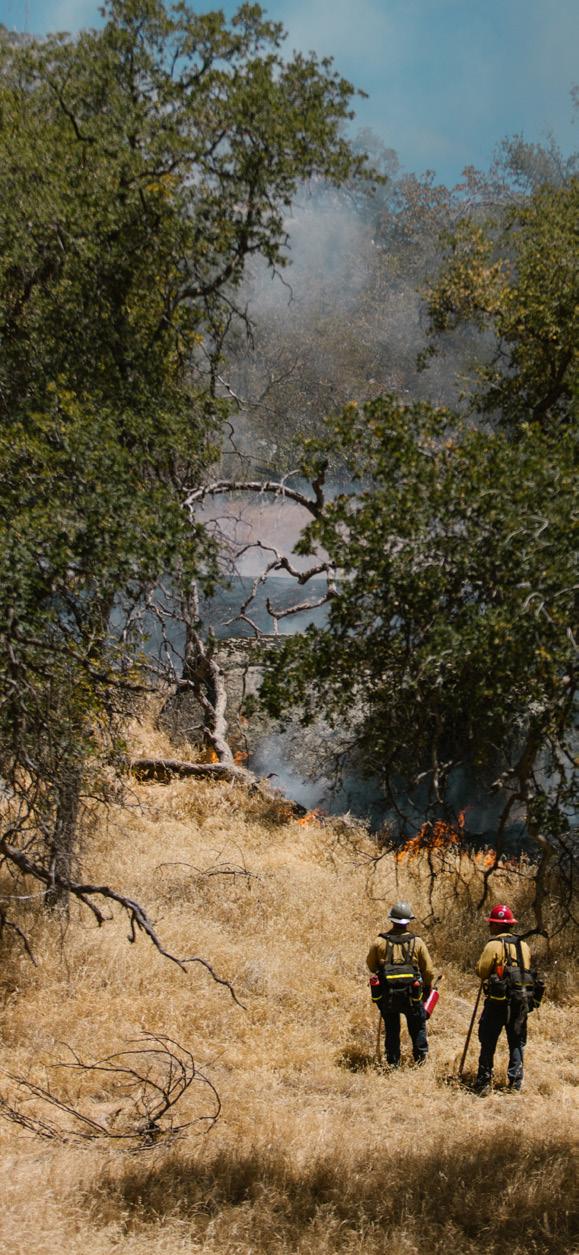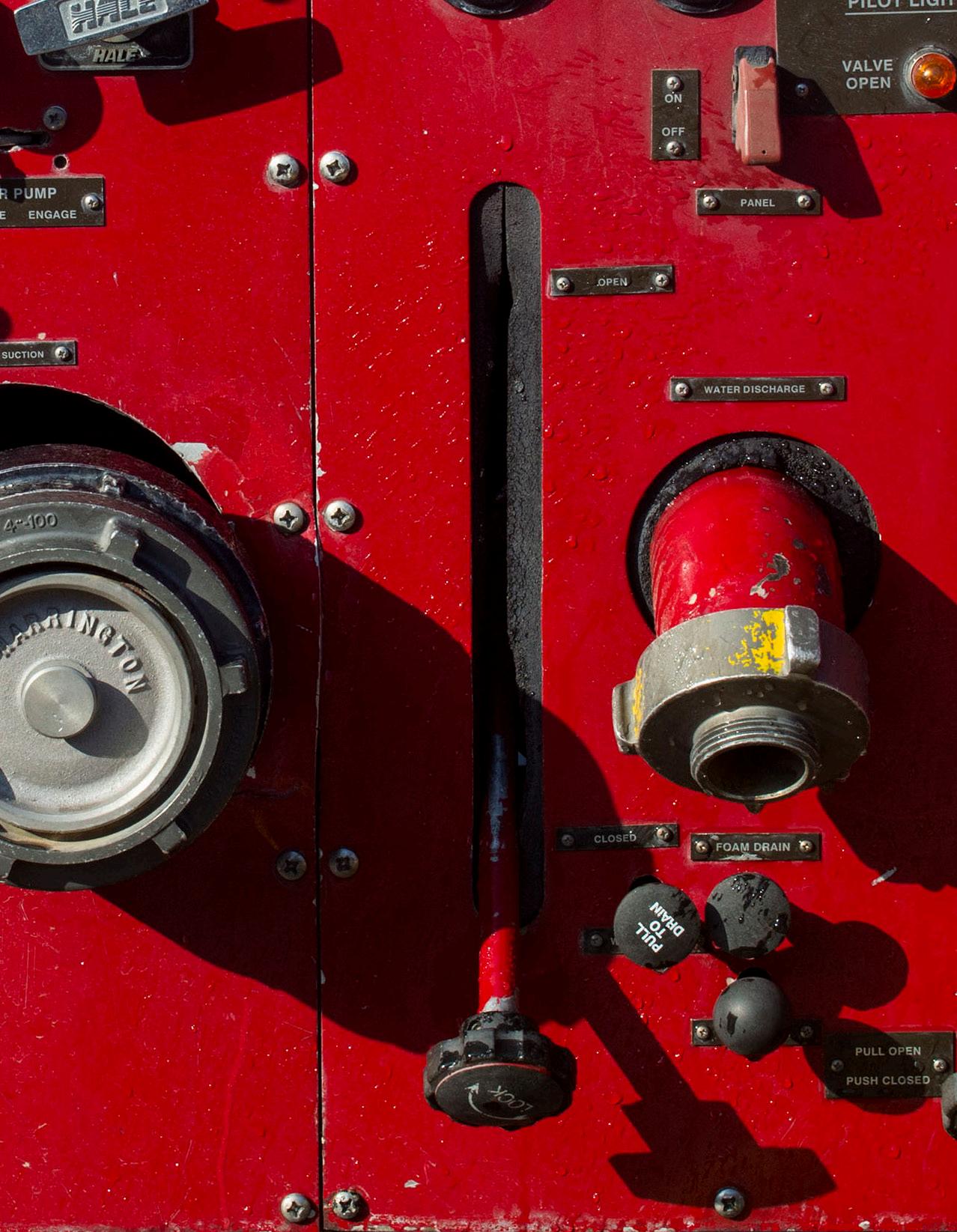FIRE DISTRICTS ASSOCIATION OF CALIFORNIA



Eric Walder, President
Jeff Willis, 1st Vice President
Don Butz, 2nd Vice President
Richard Pearce, Treasurer
Catherine Smith, Executive Director
Carmen Berry, Deputy Executive Director
Melissa Feltz, Coordinator
Dani Dejeu, Assistant
Brett Moore, Legislative Assistant
Derrick Bouchard, Graphic Designer
Pexels, Pixabay, Shutterstock and Unsplash
The purpose of this Association shall be: 1) to present a united position on fire protection issues; 2) to coordinate with other associations with similar views on fire protection, including legislation; 3) to provide advisory services and any other services deemed appropriate by the Board of Directors that may benefit member agencies; 4) to keep member agencies informed on laws relating to fire suppression, emergency medical and other related services provided by member agencies; 5) to take an active role in the legislative process affecting public agencies providing fire suppression, emergency medical and related services.


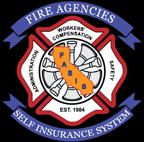
Thank you to all the authors in this issue for sharing with you their time and expertise. If you have an idea for a future article, please contact Carmen Berry at the FDAC office at cberry @fdac.org.
Disclaimer: The views and opinions expressed in these articles are those of the authors and do not necessarily reflect the official policy or position of FDAC.
For more information on FDAC or this magazine, please contact the FDAC office at 916.231.2137 or visit the website at www.fdac.org.

Susan Blankenburg, General Manager
1255 Battery Street, Suite 450 San Francisco, ca 94111
Office 415.536.4005 Toll Free 855.350-7617
Lowest Stable Premiums Available
Exclusively Fire & Emergency Service Agencies
Broadest Insurance Coverage Available
Risk Management Assistance
In 1987, one of the largest insurers of California Fire Districts informed the fire industry that they would not be renewing their insurance. FAIRA's first year of operation resulted in an immediate premium reduction of 30%, and that was just the start! Since then we’ve continued to see favorable outcomes for our members including a combined additional savings of over 10% in the past 7 years alone. Not only did we create a solution that guaranteed continuous coverage and reduced premiums, FAIRA is the largest and only multi-state Fire District pool in the United States and has saved millions of dollars.
Our members pay less in premium than they did in 1988 for exposures that have quadrupled. We provide our members with risk management and loss control services including contract review, live & online training and we provide insurance rates that lead the marketplace when it comes to coverage terms and pricing for Property, Vehicle & Liability coverage for Fire Districts and Emergency Service Agencies
www.faira.org

Iam excited to be the new President of the Fire District’s Association of California (FDAC), this distinction comes with some large shoes to fill with our immediate Past President Jim Comisky fulfilling his term as President and leaving his term with FDAC being stronger, more relevant, and strategically aligned internally and externally to move our association forward. I have been on the FDAC Board since 2015 serving three terms as a Zone 3 Director, Treasurer, 2nd Vice President and most recently less than a year as 1st Vice President following Chief Frank Frievalt’s retirement (Congrats Chief Freivalt). Although a short term as 1st Vice President I believe I am prepared to do the necessary work needed to continue moving FDAC forward strategically with the rest of the Board and our members. I would be remiss without welcoming your Executive Board at FDAC to their newly elected positions. Chief Jeff Willis, First VicePresident, Chief Don Butz, Second Vice-President, and Chief Rich Pearce, Treasurer. I know with the vast amount of experience represented on the Executive Board and the entire Board of Directors we will make this transition without a hitch. We continue to be thankful for the backing of Smith Moore and Associates as our association managers and value their knowledge and expertise.
As we come off an extremely successful conference the FDAC Education Committee is already working to put together next years program and other main attraction training opportunities including, the annual Leadership Symposium and Certificate of Achievement in Fire District Leadership
(COA) program. Currently there is a COA program being taught at the Southern Marin Fire Station where Board Members and Fire Service Leaders learn what it takes to develop, manage, and maintain a successful Fire District. Reach out to FDAC if your District wants to learn more about the program or if you are wanting to find information about hosting a COA we will be happy to connect you with a member of our Education Committee.
The Board of Directors is moving forward being legislatively active and continues to support FDAC’s Legislative Committee who is part of the Joint Legislative Task Force with the California Fire Chiefs Association Legislative Committee meeting regularly to scrutinize and form as many collaborative positions on legislation as possible. This collaborative approach makes our voices stronger and continues to serve our association well.
This FDAC Board, although technically new, all the Executive Board members have been serving on the FDAC Board for years and know that the most critical issue is long term sustainable funding for Fire Districts. I assure the membership that we are doing everything possible to move this topic forward in a manner that can be successful.
As we move into WILDFIRE season, I hope we all have a slow year, but if not, I hope for all firefighters to return from all incidents safely.
In gratitude,
Eric G. Walder, EFO Waterloo Morada Fire Protection District President FDAC

FDAC membership renewals for the 2023 – 2024 fiscal year are now underway! We would like to thank all of our current members for their continued support as we strive to provide better and expanded member benefits to fire protection districts throughout California.
Our 2023 Annual Conference and 2022 Leadership Symposium were both a success with strong presentations and great networking done throughout the industry. With one COA event already in the books we look forward to our next COA event which will be held in Mill Valley on July 24 – 25, 2023. Thank you to our member, Southern Marin Fire Protection District for hosting the event! In the meantime, the team here at FDAC is also working to put together the 2023 Leadership Symposium, which will be held in the fall. More details to come!
Through the years Fire Protection Districts are able to persevere through the strength, mutual aid, and support we provide to one another. The FDAC board and staff recognize the commitment and service each of you provide to one another and to your local communities to help ensure the health and safety for all California citizens.
FDAC continues to reach out and collaborate with other groups who share our mission and values. FDAC is a proud participant in the FDAC-CalChiefs Legislative Task Force, the Fire Legislative Priorities Group, and will continue our vigilance for finding new ways to ensure our members voices are heard. Our legislative focus for the session has centered on two areas; the upcoming budget deficit and ensuring that local fire maintains their independence to provide service to their communities. Within the State Congress themselves, we have seen a marked increase in interest in supporting all firefighters across the state through financial, personal, and mental health initiatives.
Again, thank you for remaining part of our fire protection district family. We are honored by the service you provide to your communities and the commitment you bring to FDAC and we could not be the voice of our members in all forums, without your support. If you have any questions or need help in renewing your membership, please contact Daniela Dejeu at staff@fdac.org or (916) 231-2941.


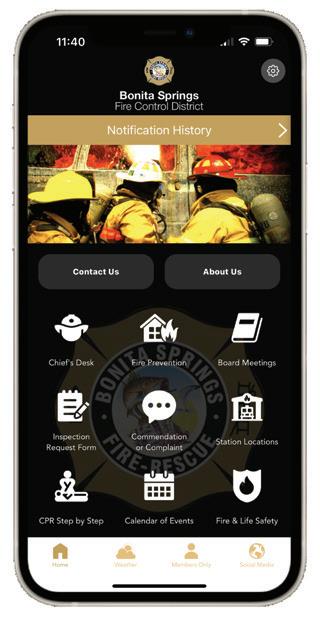
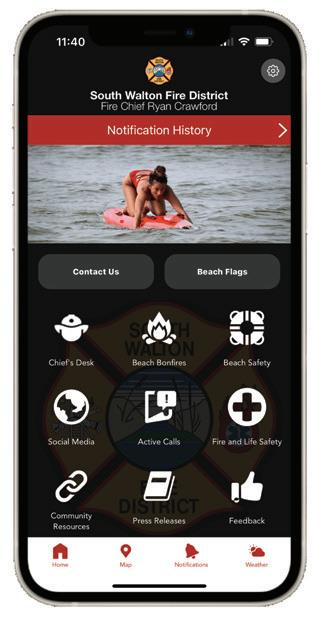




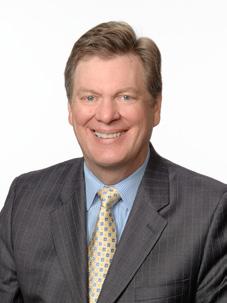
The California Legislature has returned to the Capitol to begin the 2023-24 Session. The first order of business was to organize the two Houses after an unprecedented number of new members were elected to office in November. Even though nearly one quarter the body turned over, over three quarters of the seats remained in Democratic hands. The Senate organization was orderly, and the makeup of standing committees was released early in January. However, in the Assembly, after a marathon and often heated caucus meeting, the Assembly Democrats elected Anthony Rendon of Lakewood to continue to serve as Speaker, but they also elected Robert Rivas of Salinas to assume that critical leadership position effective July 1 of this year. An unusual circumstance indeed, which led to an extended delay in the construction of committees with the committee lists just being announced on January 18. It will take some time before these committees convene to begin sifting through newly introduced bills.
Governor Newsom released his May Revision to the 2023-24 State Budget on May 12th. The proposal seeks to close an estimated $32 billion shortfall while maintaining recent increased expenditures in education, health care, public safety, housing and homelessness, and climate action and preserving $37.2 billion in total reserves. The May Revision continues to sustain various programs and subject areas of importance to the fire service including:
• Housing and Homelessness Maintains $3.4 billion in funding proposed for homelessness programs.
• Climate—Maintains $2.7 billion in a multi-year wildfire and forest resilience package and adds $290 million for a flood risk reduction package to reduce flood risk and enhance flood system resilience. The May Revision includes an additional $1.1 billion in General Fund shifts across climate resilience programs that would be bond eligible.
• Infrastructure—The May Revision includes proposals to facilitate and streamline project approval and completion to maximize California’s share of the federal infrastructure spending opportunity and expedite the implementation of projects that meet our social, climate, and economic goals.
• Basic Aid Wildfire Property Tax Backfill—An increase of $632,000 one-time Proposition 98 General Fund to backfill reduced property tax revenues for certain school districts that were impacted by the Kincade Fire.
The 2021 and 2022 Budget Acts allocated approximately $54 billion over five years to advance the state’s climate and opportunity agenda. The May Revision continues to prioritize the state’s climate agenda and maintains approximately $48 billion (89 percent) of these investments.
The May Revision maintains $2.7 billion (98 percent) over four years to advance critical investments in restoring forest and wildland health to continue to reduce the risk of catastrophic wildfires in the face of extreme climate conditions. The May Revision also includes the following:
• Climate Catalyst Fund
$25 million one-time General Fund, which partially restores the General Fund reduction proposed in the Governor’s Budget.
The May Revision maintains $1.4 billion (89 percent) in investments over multiple years in programs and projects to support naturebased solutions.
The May Revision maintains $444 million (68 percent) in investments over multiple years in programs and projects to support extreme heat.
The May Revision maintains $1.6 billion (85 percent) in investments over multiple years in programs and projects to promote community resilience.
The May Revision maintains $734 million (57 percent) in investments over multiple years in programs and projects for coastal resilience.
The May Revision maintains $8.5 billion (97 percent) in investments over multiple years in programs and projects to bolster the capacity of communities and ecosystems to endure droughts and floods.
Addressing statewide flood impacts, the May Revision includes $290 million one-time General Fund. $250 million to support various at-risk communities, including those in the Tulare Basin, from these impacts and to better withstand future flood events, including:
• Flood Contingency—$125 million onetime General Fund as a flood contingency set aside to support costs associated with preparedness, response, recovery, and other associated activities related to the 2023 storms, the resulting snowmelt, and other flooding risks, including, but not limited to, supporting communities and vulnerable populations, such as farmworkers, from these impacts and to better withstand future flood events.
• Flood Control Subventions—$75 million one-time General Fund to support local flood control projects, including in communities impacted by recent storms, such as the Pajaro River Flood Risk Management Project.
• Small Agricultural Business Relief Grants
An increase of $25 million one-time General Fund to expand the scope of the current California Small Agricultural Business Drought Relief Grant Program to provide direct assistance to eligible agriculturerelated businesses that have been affected by the recent storms.
• Disaster Response Emergency Operations Account Set Aside—$25 million one-time General Fund in the current year in anticipation of potential additional disaster relief and response costs associated with recent storms and future flooding.
• 988 Suicide & Crisis Lifeline (AB 988)
The May Revision includes $15 million one-time 988 State Suicide and Behavioral Health Crisis Services Fund in 2023-24 to support eligible 988 call center behavioral health crisis services, for a total of $19 million in 2023-24 and $12.5 million in 2024-25 and ongoing.
The 2023 Five-Year Infrastructure Plan includes $176.5 million ($1.8 million General Fund and $174.7 million Public Buildings Construction Fund).
In 2023-24 for two capital projects including the security checkpoint enhancements at the Cal OES Headquarters facility in Sacramento and the construction of a new Southern California Regional Emergency Operations Center (SREOC).
The 2023 Five-Year Infrastructure Plan includes $1.1 billion ($236 million General Fund and $857.8 million Public Buildings Construction Fund) over the next five years for the continuation and addition of critical infrastructure projects statewide, including but not limited to, the replacement of aging fire stations, unit headquarters and communication facilities, the creation of a new training center, and the replacement of helitack bases and improvements to air attack bases to accommodate CAL FIRE’s new helicopter fleet and C-130 aircraft deployment plans.
For the 2023-24 fiscal year, the Administration proposes $36.9 million ($30.4 million General Fund and $6.5 million Public Buildings Construction Fund) for the continuation and addition of critical major capital projects, including the replacement of various fire stations, unit headquarters, conservation camps, and helitack bases, as well as for air attack base infrastructure improvements. These projects are in various stages of completion from acquisition to design and construction. The Administration also proposes initial funding for the Additional CAL FIRE Training Center: New Facility project which will address CAL FIRE’s long-term training facility needs.
Governor Newsom and legislative leadership will now enter into serious negotiations to reach a final State Budget by the June 15, 2023, deadline. Senate President pro Tempore Toni Atkins and Senator Nancy Skinner, the Chair of the Senate Budget &
Fiscal Review Committee issued a joint statement noting this year’s Budget will be challenging but they, “appreciate the revised proposal reflecting many of the Senate’s key values, which includes avoiding ongoing cuts to core programs, preserving our primary Rainy Day Fund and expanding responsible borrowing – including a Climate Bond – to avoid cuts to climate and infrastructure projects.”
The Joint Legislative Task Force continues the process of analyzing bills and making recommendations to the FDAC and Cal Chief’s Boards for establishing positions and creating priorities. Once again, this year, Cal EMS legislation has been both numerous and far reaching in its significance. In this category, the following bills we are supporting have moved out of their committees of origin and are waiting to be heard in the Appropriation Committees the week of May 15th:
Assembly Bill 40 (Freddie Rodriguez) would require Cal EMSA to develop a statewide standard of 30 minutes, 90% of the time for ambulance patient offload time (APOT) and create an electronic signature system that captures the point of arrival and when transfer of care is executed. Eligible hospitals would be required to develop APOT reduction protocols and EMSA would be required to monitor all hospitals required to submit reports. The general acute care hospitals are actively engaged in an effort to reach a compromise on this measure.
Assembly Bill 1168 (Bennett) would overturn the City of Oxnard decision and therefore allow cities or fire districts that had .201 rights when they entered into a Joint Powers Agreement (JPA) with counties to provide pre-hospital EMS to maintain those rights when they exit a JPA. AMR, CSAC, RCRC EMDAC, EMSAC, AFSCME and many individual counties remain strongly opposed and despite efforts by the author, appear prepared to fight this bill all the way through the process.
Assembly Bill 1180 (Rodriguez) would expand the eligibility criteria for being the Director of Cal EMSA beyond being a physician to include someone who has substantial experience in emergency medicine, medical services, and emergency management.
Assembly Bill 482 (Wilson) would maintain funding for Emergency Medical Air Transportation by transferring $8 million to the Fund to support MediCal reimbursements.
Assembly Bill 767 (Gipson) would extend the sunset date for community paramedicine programs to January 1, 2031, and add short term follow-up for persons discharged from a hospital to the list of eligible services under the program.

Other priority bills that we are supporting and are moving through the legislative process include:
Senate Bill 577 (Hurtado), which is a sponsored bill to expand the authority of the State Fire Marshal to receive fire service training and education fees from sources other than user fees and, if successful, to reduce or waive fees in order to promote the opportunity for a wider diversity of applicants to seek firefighter training.
Assembly Bill 297 (Fong) extends the sunset date to January 1, 2034, for CAL FIRE to authorize advance payments from a local assistance grant program for fire prevention and home hardening educational activities.
Assembly Bill 700 (Grayson) would establish a California Firefighter Cancer Prevention and Research Program to award grants to institutions to conduct research on biomarkers of exposure to chemical carcinogens absorbed by firefighters that ultimately lead to a cancer diagnosis.
Assembly Bill 788 (Petrie-Norris) would require the Wildfire and Forest Resilience Task Force to compile and post on its website information to make it easier for local agencies and others to become aware of fire prevention grant programs.
Senate Bill 436 (Dodd) would require Cal OES to develop a Wildfire Mitigation Strategic Plan to implement such actions, establish a wildfire risk baseline and forecast and annual wildfire mitigation scenarios report.
Senate Bill 470 (Alvarado-Gil) would extend existing drought relief programs to fund projects that provide benefits in addition to drought relief to include projects to reduce the risk of wildfire through water delivery system improvements for fire suppression purposes.
Senate Bill 504 (Dodd) would require CAL FIRE to give priority under the fire prevention grant program to any local governmental agency qualified to perform defensible space and home hardening assessments and to report to CAL FIRE as specified.
The following two bills would place bond measures on the November 2024 Ballot:
Assembly Bill 1567 (E. Garcia) would authorize a $15.1 billion bond act to fund safe water, wildfire prevention, drought preparation, flood protection, extreme heat mitigation, and workforce development.
Senate Bill 867 (Allen) would authorize a $15.5 billion bond act to fund all of the above plus forest and coastal resilience smart agriculture, parks, outdoor access, and clean energy programs.
As the Legislative Session gathers steam, our leaders will continue to collaborate with our fire service partners by meeting quarterly to develop mutual strategies to increase the success of our legislative efforts. These meetings include discussing longer term planning on the effort to sustain and advance local fire department funding at the Capitol. Further, the Legislative Task Force will continue to monitor and analyze amendments on the nearly 200 measures that are being tracked this year. The next Task Force Zoom Meeting is set for Friday, May 19, 2023.
FDAC offers a “mobile” training program specifically designed for fire protection district board members and professional fire leadership. Governing a fire protection district has similar aspects to other special districts but yet unique requirements which is why FDAC offers the Certificate of Achievement (COA) program. The COA course of instruction is a two event where presentations will cover the following topics:

• Legislation, Regulations and Code
• Board Organization, Roles, Responsibilities, and the Brown Act
• Fire District Planning
• Latest Trends, Issues, and Resources
Each of these topics are presented through an interactive process by fire district professionals, well-versed in the understanding of what it takes to develop, manage, and maintain a successful organization. Register today to help you and your district prepare for excellence!
REGISTER TODAY!
For new board members, veteran board members, new fire chiefs, veteran fire chiefs, administrative staff, and anyone else involved with the fire district governance.
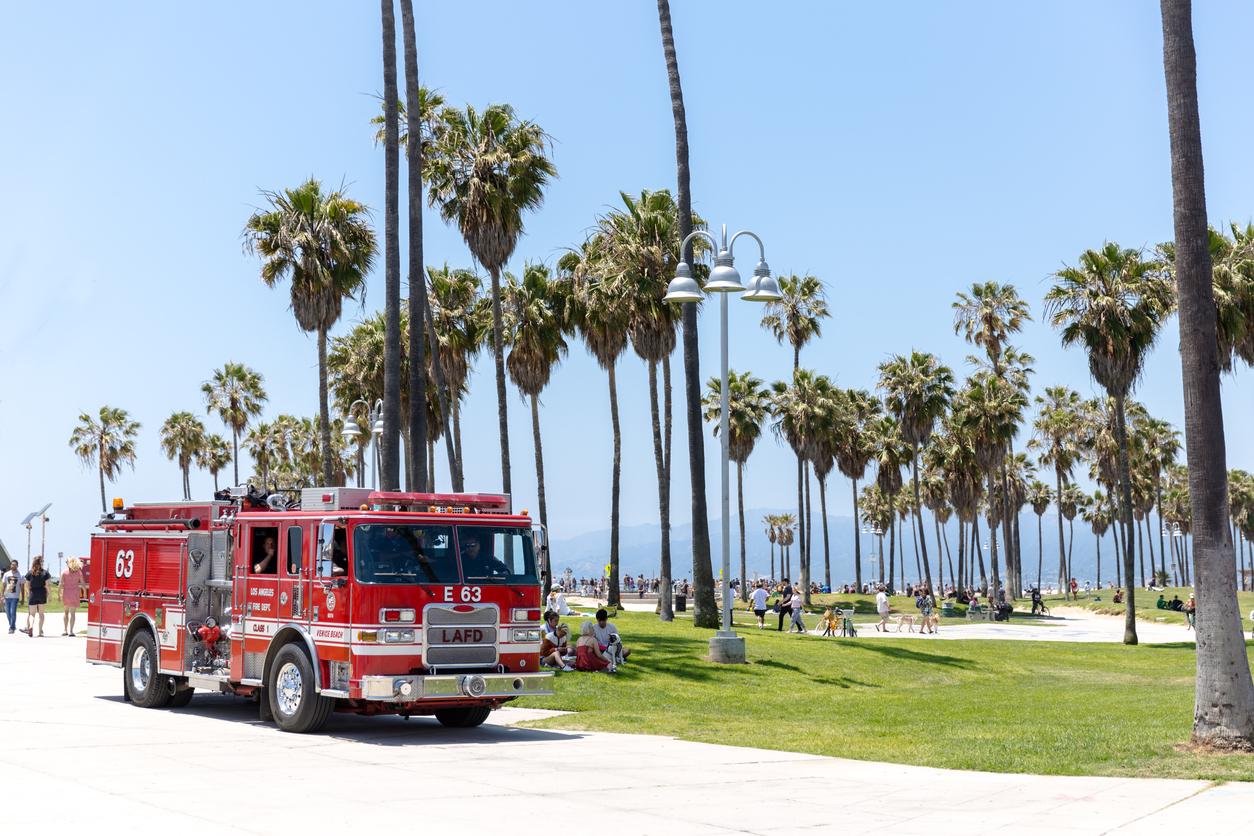


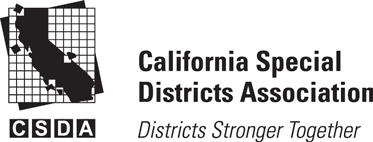

For this issues Leadership Corner, FDAC was going to focus on the California Master Mutual Aid System so when we were handing out assignments, I naturally raised my hand jumping up and down to be able to write this article. Well, that may be an embellishment, but I am super interested in being involved with the topic of Master Mutual Aid and some of you may have caught my presentation regarding this topic at the FDAC Conference a few months back. My background in the Mutual Aid System started as a firefighter in the early 1990’s making the trek south to Malibu and Topanga Canyon Fires riding backward in an open cab OES Engine. There were many other strike teams throughout my time on the line on local government (LG) engines and OES engines up and down the state, and I was always amazed with the system. In 2012 I became an alternate Operational Area Coordinator (OAC) for Placer County (XPL), 2015 I became the primary OAC for XPL, and an alternate Region IV Coordinator. In 2017 I became the Region IV Coordinator and have held this position since that time.
I was surprised to find out when I became an OAC how antiquated the system was and how slow it is to move orders, fill them and get resources on the road for many assignments. Of course, those internal OP area, and then Op area to Op area requests are easy. Orders are placed direct and go direct to dispatch center to dispatch center, engine goes puts fire out and returns to quarters. When orders are placed into IROC or before IROC’s time ROSS, that is where a lot of the issues arise. First let me say the local government folks that are trying to make
the current system work are doing the best job they can, but it is just a system that needs full-time communications staffing and IT support to make any notable improvements from what already has been done. You may ask what has been done, well in Region IV the LG leadership and the OES Assistant Chiefs in the Region developed a google doc Region IV Resource Statusing document that makes it easy to status resources without phone calls to 12 counties or individual faxes/emails daily. Along with using messaging apps like Whatsapp to communicate with all twelve OA’s at one time filling orders as quickly as we can. It is not perfect it relies on 12 OA’s to monitor their phones 24/7 and a Region Coordinator to do the same. Let me remind you these positions are not funded by anyone. The technology we have used to make the system work is free and owned by Google and others. Also, let me remind you that we are busier than we have ever been, and the State and the Feds are relying on LG more now than at any other time in the past, where is our funding? OES is so reliant on Google sheets that all their resource statusing is being done through this freeware platform. Brilliant, but also a bit disturbing that this is the one major thing the State of California does not fund but when fires are burning what do we need quickly, Fire Engines and Personnel.
There must be a better way for the California Fire Service Master Mutual Aid System and LG Fire agencies to be supported. It is the best system in the World because of the OES Line employees holding it together with the Region Coordinators, Operational Areas, Local Fire Agencies, Region Dispatchers

and Local Comm Centers. We still see delays that are unacceptable due to a break in the fragile chain of orders that either go unnoticed or sit there because the on-duty personnel are to inundated with 911 calls (their paid jobs) to even sign in to the IROC program, maybe they haven’t been trained on the system, or maybe they don’t have a sign in to the system? I am not making these instances up; I have seen them all over the last few years when orders sit. Not a big deal unless you made the request.
I was happy to see the notice come out for a California Fire and Rescue Mutual Aid Summit being held by OES in Ventura the first week in April 2023. I attended representing OES Fire and Rescue Region IV as the Mutual Aid Coordinator, FDAC President, and a member of the FIRESCOPE Operations Team. On the agenda were representatives from Federal, State, FIRESCOPE, and Local Fire Service Professionals. In the end there was healthy communication surrounding most all the issues and a list of modern technology programs including WFTIIC, FIRIS, NG SCOUT, and MARS. Note to self - no new dispatch related technology to support the Master Mutual Aid System was introduced.
The end product of the whole meeting was a list of Mutual Aid Summit Action Items that were compiled and the FIRESCOPE Board set a committee to see if there was anything that can be done quickly and then identify paths for the other items to be worked on moving forward. Here is the list.
• Better ways to track resource availability (Trello)
• Keeping OES and Local Government engines/ parts available with mechanical support
• NMAS National Mutual Aid System
• App for state and operational area communications (fire service cloud)
• Better communications with Special Operation resources
• What should be sent first OES vs. LG engines & substitutions of LG for OES
• Better Dispatch education/training
• Proper fit of OES engines per departments responses (training for type Ill
• Develop OES playbook for standardized response
• Seven vs. 14-day assignment
• Revisit RS 1 commitment, what should it be replaced with
• Need consistent agreements for Type I, Ill, VI, and special operations equipment
• Memorialize lessons learned during Covid experience.
• ABH positive vs. negativeCFAA Related
• Incentive Pay MOUs
• Hotel vs. sleep trailers for Local Government
As of May 16th, I have not been contacted for our first meeting although I have been included in a discussion group as the President of FDAC to help with the statement of work for a future OES Mutual Aid System Strategic Plan. I will continue to stay engaged with the Master Mutual Aid System and push for positive change that assists Local Government participate in the best mutual aid system in the world.
In appreciation,
Eric G. Walder, EFO Waterloo Morada Fire Protection District President FDAC OES Fire and Rescue Region IV CoordinatorAP Triton was founded in 2014 on the need to provide innovative solutions to public safety departments. For too many agencies, creative thinking is not part of the status quo. AP Triton is able to bring our experience to enable long-term, creative, and sustainable solutions specialized to your local issues. With decades of experience in public safety departments of all sizes, AP
• Community Risk Assessments / Standards of Cover
• EMS Billing Rate Studies
• First Responder Fee Studies
• Staffing Studies
• Ambulance Service Feasibility and Optimization Studies

• Customer-Centered Strategic Plans
• Operational Analyses
• EMS System Valuations and Analyses
• Annexation Feasibility Studies
• Master Plans
• Fire Protection and Life Safety Feasibility Studies
• Mobile Integrated Health Studies
• Accreditation Guidance
• Fire Station Location and Engineering Studies
• Succession Planning
• Deployment Studies
• GEMT Creation and SPA Development
• Fire Prevention Fee Development Studies
• Communication Technology and 911 Studies
• Revenue Generation Studies
• Regional Fire Service Studies
• Expert Witness Testimony
• Fleet Management Studies
• Enabling Legislation Creation
• Organizational Assessments
• Alternative Governance Model Feasibility Studies
The North Central Fire Protection District (NCFPD) was established in 1947, and provides a full range of emergency services and community risk reduction. The District has 5 elected board members from the public and protects 230 square miles, including the City of Kerman, the township of Biola, and unincorporated areas of Fresno County. The District is a fully paid fire department with 65 full time suppression members and 10 administrative and business staff. The District operates out of six strategically located fire stations (54, 55, 56, 57, 58, 59) two of which opened July 1, 2022 and currently has a daily staffing level of 22 suppression personnel; (1) Battalion Chief, (6) Captains, (7) Engineers, and (8) firefighters. Administrative staff are assigned to Headquarters located in the City of Kerman. Administrative staff includes, a General Manager, finance staff, facility technician, IT Manager, training officer, a Battalion Chief, Deputy Chief, and Fire Chief.


In 2023 the NCFPD, in partnership with Kerman Unified School District, graduated it’s first Regional Occupational Program ROP/CTE, with 20 junior/ senior high school students. The classroom and hands-on training was conducted at station 55’s training facility. Additionally, the District in partnership with Fresno City College student internship program, has upstaffed engine companies staffing from 3 persons to 4 or 5 persons at some stations. The District can accommodate 12 to 15 student interns per college semester.
Station 54 is located near Highway 99 and 180. This station houses a Type I Engine, and an State OES Type VI engine.
Station 55 / Headquarters is located 18 miles west of the City of Fresno, in the City of Kerman with a population of 17,000 surrounded by rural agriculture. Station 55 is equipped with a variety of front line, reserve, and specialty equipment. Front line apparatus are cross staffed by call type and response zone and include a
primary response Type I engine, a Type 6 engine, a 105’ ladder truck and a 3,000-gallon water tender. The station also houses a fully equipped reserve engine, support vehicles, and (5) electric all-terrain vehicles. Lastly, one of the District communications towers and training classroom support the district at station 55.
Station 56 is located adjacent to the Historical Kearney Manson and park, west of highway 99. This station houses a Type I engine, personnel cross staff’s a Type II Tactical Water Tender, and has a large first due area primarily comprised of rural agriculture and remote areas.
Station 57 is located in the township of Biola with 1,350 population. This station houses a front-line Type 1 1500 GPM engine, and cross staffs a water tender primarily serving the community of Biola and surrounding rural agriculture and more than 10 miles of the San Joaquín River.
Station 58 located near highway 99 and the San Joaquin River serves a mix of suburban and rural area with one front line Type 1 engine, and a Type VI Ford 550, 300 gallon, 1250 GPM engine, and
two reserve engines. Station 58 also houses the Fire Shop, training classroom and burn room, SCBA repair shop, and District Logistics.
Station 59 was re-opened in July of 2022 and house a Type 1 1500 GPM, four-person staffed engine company and a Type VI engine, two-person staffed. This station is centrally located within 5.2 square miles of unincorporated islands surrounded by the City of Fresno.

The District sets between Interstate 5 and Freeway 41, and is comprised of agricultural, rural residential, suburban and metro areas. The District has several target hazards such as large agricultural commercial buildings, power plans, communications towers, several large quantity hazardous materials buildings and manufacturing plants. The District also has approximately 25 miles of the San Joaquin Valley Railroad, approximately 20 miles of Highway 180, and 22 miles of the San Joaquin river.
Over the last two years the District has been aggressive in procuring and implementing new technology and equipment as well as in servicing new apparatus and infrastructure to support our personnel in the field to best serve our communities.
The District also has a robust community risk reduction program that includes internal fire inspection, code enforcement, investigation, plans review and public education. The District participates with National, Regional, and local organizations such as FIST, FISE, and the Alisa Ann Ruch Burn Foundation to provide enhanced fire investigation, code enforcement, and public education capabilities. Operations personnel assist the fire prevention division conducting business inspections of 3,260 inspectable occupancies, performing hydrant maintenance, weed abatement, and pre-fire planning each year.
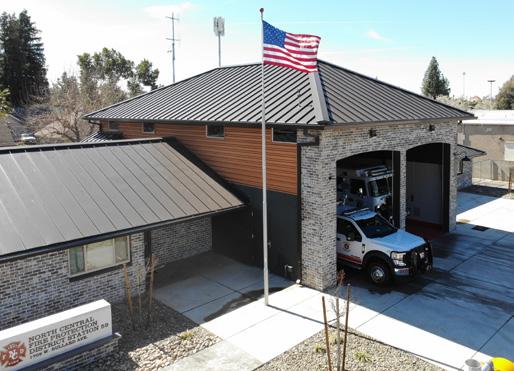
Response area: 230 square miles
Population: 51,000
Total calls: 4,488
Fire: 329 (10%)
EMS: 2,702 (58%)
Other calls: 1457 (32%)
The Mission of the North Central Fire Protection District is to Integrate with our community by exceeding traditional service expectations.

The Vision of the North Central Fire Protection District is to Cultivate a legacy of growth through teamwork, unity, compassion, respect, and professionalism; rooted in community and service.
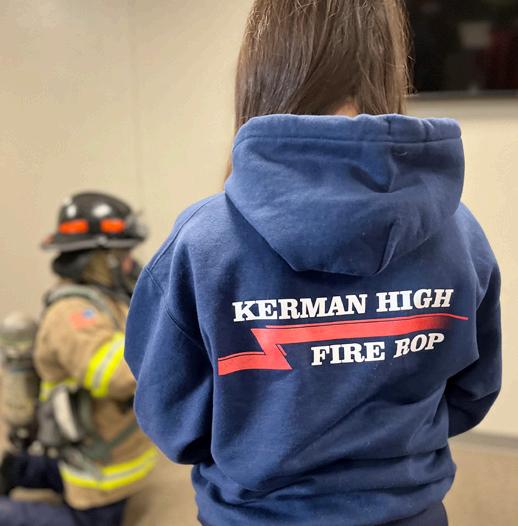
OUR VALUES
COMMUNITY / COMPASSION / COMMITMENT / TRUST / RESPECT / INTEGRITY / PROFESSIONALISM


Would you like to see your Fire Districts photo in FDAC publications and marketing material? We are looking to share the face of California local government fire. If you have photos that you would like FDAC to consider, please upload them to the dropbox link below.
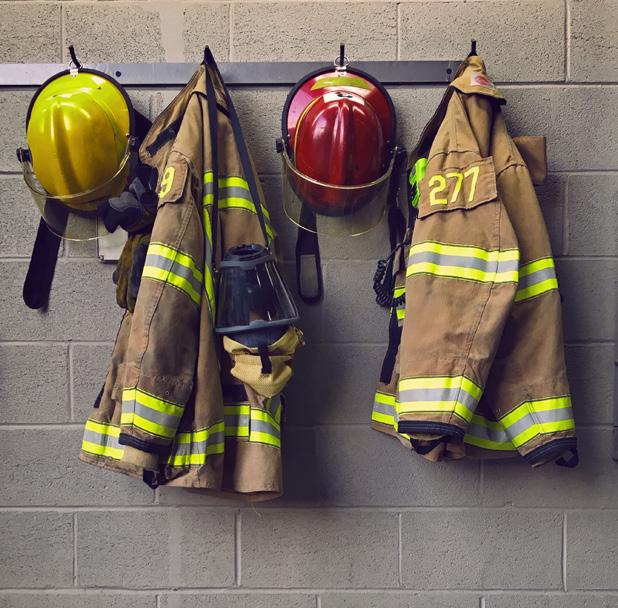
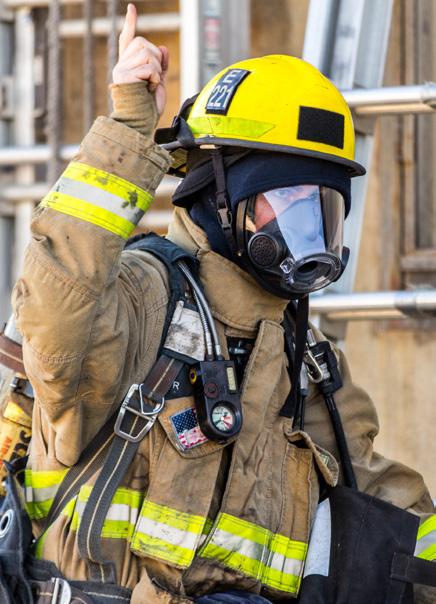
*FDAC reserves the right to choose photos as it seems fit, there is no guarantee that photos will be selected for use. This continuity has created a culture of community. As the community and State continue to change LFPD, as well as all special districts, we are all experiencing challenges in funding, growth, and providing the highest level of service possible.

The California Forestry Association (Calforests) represents over 70 companies committed to the sustainable stewardship of 3.5 million acres of private, working forests and the manufacturing of renewable wood products. The forestry sector employs over 172,000 people and contributes nearly $20 billion to the state’s economy – much of that in rural communities.
In recent years, Calforests has ramped up its efforts in the space of wildfire prevention and suppression, serving as a more engaged and active partner to both the state and federal governments than in years past. As our members’ lands have been decimated by catastrophic wildfires in recent years, the forestry sector is united by a common interest to do all that we can to address the state’s wildfire crisis.
While weather conditions certainly played a role in a “modest” fire season in 2022, Calforests also believe that its call for greater coordination and collaboration between local, state, and federal agencies also made a difference. In fact, reports on the ground indicate that the unprecedented level of cooperation amongst federal and state fire protection forces played a major role in snuffing out several wildfires before they reached a critical stage.
Furthermore, tactical advantages were captured by suppression forces during these periods of favorable weather conditions by deploying aggressive firefighting strategies. In addition to agency to enhanced cooperation, it has also been noted that an increased level of communication between suppression forces and the members of Calforests during wildfire events increased significantly and that the reliance on consultations with landowners
assisted in well-informed, strategic decision making during extended attack events. While there were measurable adjustments in suppression response, more can be accomplished, and Calforests will continue efforts to build upon progress made to date.
Wildfire prevention through vegetation management is also critical. Calforests is firmly committed to the practice of responsible, proactive forest management. Managing private forestlands in this way mitigates the potential for catastrophic wildfires and our members are continuously working to urge and partner with the USFS to engage more robustly in fuels management and fuel hazard reduction for the protection of communities, water resources, habitat, air quality, and recreation. In fact, the California Wildfire and Forest Resilience Task Force recently announced that members of Calforests contributed 200,000 acres of treatments last year that are achieving forest resiliency in Northern California, which represents a larger contribution than any contributing public sector.
Post fire restoration and reforestation continues on hundreds of thousands of acres of wildfire scars across Calforests members holdings. New opportunities are upon the horizon after months of working within legislative and agency personnel on burgeoning reforestation programs that have currently been made available through CAL FIRE. Calforests, along with its members companies are committed to reforestation and have an impressive track record on post fire recovery within California.
Calforests members look forward to driving policy solutions to combat the challenges California’s forests face.

To many, July 1st marks the beginning of the fiscal year. To members of the Fire Agencies Self Insurance System (FASIS) and the Fire Districts Association of California – Employment Benefits Authority (EBA), July 1, 2023, also marks the culmination of years of work and efforts to consolidate the two programs to form Fire Risk Management Services (FRMS).
The combined 55 years of experience across the more than 200 fire districts under the EBA and FASIS joint power authority agreements has proven both programs to be viable and successful alternatives to the commercial insurance marketplace. The long-standing goal of the Boards is to establish a “one-stop shop”, providing insurance coverage and ancillary services essential to conducting business as a California fire district. FRMS will provide a multi-line risk-sharing program (initially) offering employee benefits and workers’ compensation coverage to eligible fire districts across the State of California.
Board of Directors - FRMS’ Joint Powers Agreement, Bylaws, and policies emphasize the member-directed principle of the organization. FRMS will be governed for the first year of operation by a 13-member Board of Directors serving three-year terms, with subsequent years governed by an 11-member Board of Directors. Directors are to be the Fire Chief, Administrative Officer, or member of the Member District’s governing body. The Board is responsible for the organization’s Bylaws, annual budget, program development, admission of prospective members or expulsion of existing members, authorizing payment of dividends/assessments, and electing Board officers.
Standing Committees – The Benefits and Claims Committees are responsible for specified FRMS matters, as outlined in the governing documents.
FRMS will be comprised of 220 public agencies including, career, combination, and all-volunteer fire agencies, municipalities, and other special districts throughout California.
To be eligible for participation in FRMS prospective members must meet the following conditions:
Workers’ Compensation Program
• Be a public fire protection or community services district in the State of California

• Agree to a minimum three years of participation
Employee Benefits Program
• Be a public agency with the power to provide at least one of the following services: (1) fire suppression services, (2) emergency medical services, including emergency disease response, prevention and control services;(3) hazardous material response services (4) medical transport and/or ambulance services, including emergency transportation services(5) rescue services; (6) any other emergency response services provided pursuant to the California Emergency Services Act
• Agree to a minimum three years of participation
FRMS will provide a variety of services to members, including:
• Workers’ Compensation Claims Administration & Oversight
• Workers’ Compensation Training & Education
• Employee Benefits Consultation & Guidance
• Mental Health & Wellness
Pre-placement, Annual, and Fit-for-Duty medical exams
Firestrong, First Responder Resiliency, and Employee Assistance Program
• Safety & Risk Control Consultation & Program Development
· On-Site or virtual risk control reviews
· Safety trainings, video library, publications, and sample SOPs
• Attorney hotline for personnel-related issues
Partnership with Fire Districts Association of California
FASIS and the EBA were created in partnership with the Fire Districts Association of California (FDAC) and will continue to promote self-insurance services, membership, and participation in the programs through marketing, training, and legislative support.
For questions regarding FRMS, the programs, operations, and services, please contact FASIS Executive Director, Jennifer Jobe, at jennifer.jobe@sedgwick.com, or FDAC EBA Administrative Director, Carmen Berry, at cberry@firebenefits.org.
